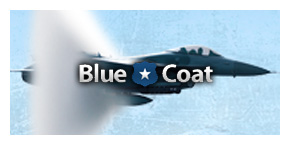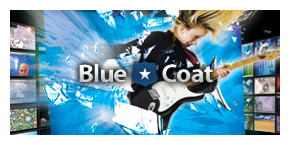Ad Views aka “Impressions”: Number of times an ad banner is downloaded and presumably seen by visitors. If the same ad appears on multiple pages simultaneously, this statistic may understate the number of ad impressions, due to browser caching. Corresponds to net impressions in traditional media. There is currently no way of knowing if an ad was actually loaded. Most servers record an ad as served even if it was not.
Advertorial: A combination of ad and editorial typically found on content sites.
Bandwidth: The information-carrying capacity on the Web. It’s basically how much ‘stuff’ you can send through an Internet connection. But due to current bandwidth limitations, marketers can’t do a lot of sophisticated advertising that involves full-motion video.
Banner ads: A graphic image typically placed at the top of an ‘editorial content’ page linking to the advertiser’s content page. Standard banner ad sizes are (in pixels): 468 x 60 (full size); 234 x 60 (half size); 125 x 125 (tile); and 120 x 60 (button).
CPC (cost per click): A performance based pricing model where the advertiser pays the publisher for actual click-through and not for impressions served.
CPL (cost per lead): A performance based pricing model where the publisher is paid only when someone clicks on a banner ad and becomes a qualified lead by completing an order or request form.
CPM (cost per thousand): The cost of 1,000 ad impressions. A site that charges $15,000 and guarantees 600,000 impressions has a CPM of $25 ($15,000/600).
CASIE: Coalition for Advertising Supported Information and Entertainment. It was founded in May of 1994 by the Association of National Advertisers (ANA) and the American Association ofAdvertising Agencies (AAAA) to guide the development of interactive advertising and marketing.
Cache: A file on the client computer, or corporate server, that stores (caches) Web pages for display in the browser. This speeds page viewing because pages are downloaded to the client computer from a local computer vs. having to download from the Web.
Click-Through (ad click): The act of clicking a banner, or other ad, which links the user to the location of the advertiser’s choice (typically the advertiser’s Web site). The Click-Through rate is the percentage of times an ad is clicked divided by the number of times it is served. If an ad is served 100 times and 1 visitor actually clicks on the ad; the banner has a Click-Rate of 1%.
Content Sponsorship: An area of content sponsored as a distinct entity often by a single advertiser as opposed to banners rotating with individual advertising messages. Often the content will reflect the nature of the advertiser as well as the nature of the target demographic.
Cookies: Electronic ID tags sent from a Web server to a user’s browser to track and record their Web-surfing patterns, i.e., ads clicked on, products purchased, sites visited and the user’s origin. This can enable the site to provide more personalized information to be served upon a return visit to the site.
Directory Advertising: Any form of advertising (typically banner ads) on directories. Directories are often focused on local areas as opposed to general search engines that scour the Web for requested information and categorize it.
Eyeballs: The number of people who see an ad.
GIF / Animated GIF (Graphic Interchange Format): The most common file compression format for banner ads and most other pictures on the Web. An animated GIF is created by combining multiple GIF images in one file. The result is multiple images, displayed one after the other that gives the appearance of movement. Research indicates that animated banners are more effective than static banners, generating higher ad awareness, recall, and click-through.
Hits: The individual requests a server answers to download a Web page. There’s been debate as to the validity of ‘the number of hits’ pages or sites are said to receive. That’s because some Web servers count hits as not only the page document itself, but also the images on the page and any other media files embedded there. So, for example, if someone went to a site and saw text and five ads, that visit may translate to 6 hits for a Web site.
Hotlink (Hyperlink): Text or graphics that have linking properties. When a user clicks on linked text or graphics, the user is transported to another location of content either on the same server or another server.
IAB aka “Interactive Advertising Bureau”: The leading online global advertising industry trade association with over 300 active member companies in the United States alone. IAB activities include evaluating and recommending standards and practices, fielding research to document the effectiveness of the online medium and educating the advertising industry about the use of online and digital advertising. Current membership includes companies that are actively engaged in the sales of Internet advertising (publishers), with associate membership including companies that support advertising, interactive advertising agencies, measurement companies, research suppliers, technology providers, traffic companies and other organizations from related industries. The IAB is an expanding global organization with certified International chapters and Corporate members in Asia and the Far East, North and South America, Europe and Eastern Europe, South Africa and The Caribbean.
Impressions (ad requests): An impression is the industry term for delivering an ad on a Web page. Technically, an impression is a call from the ad engine to the ad server to return an advertisement graphic.
Interstitial Ads: Interstitial ads appear between two content pages. If a user is on content page A and clicks on a hyperlink to go to content page B, the interstitial ad will appear after the user clicks on page A, before the user is moved to content page B.
Jump Page: A jump page, also known as a “splash page,” is a special page set up for visitors who clicked on a link in an advertisement. For example, by clicking on an ad for Site X, visitors go to a page in Site X that continues the message used in the advertising creative. The jump page can be used to promote special offers or to measure the response to an advertisement.
Macrosite: The same as a microsite but it involves more than a page of content.
Microsite: A page or less of content that a marketer creates on a Web site. (Not to be confused with content sponsorship, where the marketer sponsors content that already exists on a Web site).
Page Views: The number of times users request a page which may contain a specific ad.
Rich -Media: Media technology that has been either developed or enhanced to deliver interaction, multimedia, expanded creative space, transaction behavior, and interaction to the users through the Web.
Spam: An inappropriate attempt to use a mailing list or other networked communications facility as if it were a broadcast medium.
Streaming Audio/Video: Audio or video that plays the file as it loads. Streaming files allow for users to avoid waiting for the files to completely load before previewing.
Third Party Ad Serving: An end to end advertising management system designed to maximize advertising ROI and streamline the entire web advertising process. A resource for trafficking creative, tracking performance of campaign, and reporting key data (e.g. reach, frequency and impressions). Two major Third Party Ad Serving systems are AdKnowledge and Matchlogic.
Unique Visitors: Different individuals that who visit a site within a specific time period; used to define the net, unduplicated reach of a web site, usually looked at over a day, week, or month.
URL Tagging: The process of embedding unique identifiers into URLs contained in HTML (the coding language used to format documents for the World Wide Web) content. These identifiers are recognized by Web servers on subsequent browser requests. Identifying visitors through information in the URLs should allow for an acceptable calculation of visits, if caching (storing information that allows you to get to it quickly) is avoided.
User Sessions: the total number of visits by individual users.
Visits: A series of page requests by a visitor without 30 consecutive minutes of inactivity (same as a ‘user session’).


